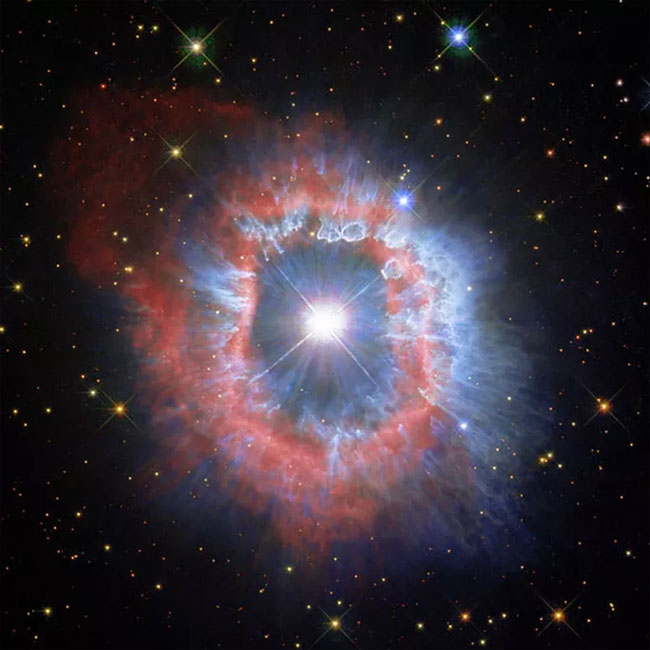Images compiled from NASA/ESA’s Hubble Space Telescope have revealed the dual nature of the giant star AG Carinae, resembling a devil’s eye when viewed from space.

The unique “devil’s eye” star in the image was assembled from multiple photographs taken between 1994 and 2021 – (Photo: NASA/ESA)
According to Sci-News, this star, also known as HD 94910, is several million years old, located 20,000 light-years away from Earth, and belongs to the Carina constellation.
The “devil’s eye” star is considered a “rare object” in the universe, caught in a tug-of-war between immense gravitational forces and radiation to avoid self-destruction.
It has a ghostly shell – a spectacular nebula – formed by material expelled by the star during past eruptions. This nebula spans about 5 light-years, roughly equivalent to the distance from Earth to the nearest “other solar system.”
This nebula has existed for up to 10,000 years and is a hollow shell containing a significant amount of gas and dust. The core of the nebula has been swept away by harsh stellar winds traveling at speeds of 200 km/s.
The most remarkable aspect of this star is that it is still evolving, even though it is currently incredibly massive and powerful. It is expected to last another 5 to 6 million years, during which it will gradually transform into a Wolf-Rayet star.
Wolf-Rayet refers to a class of “monster” stars that are extremely rare in the universe, shining tens of thousands to millions of times brighter than our Sun.


















































